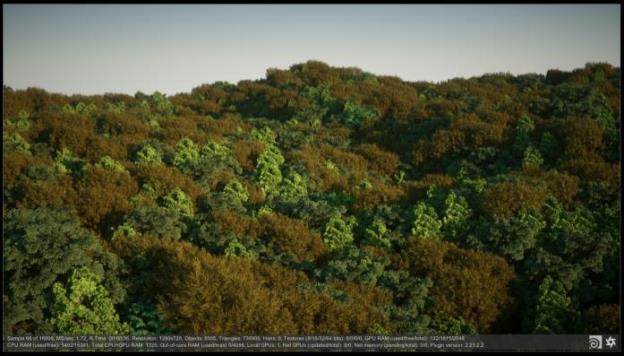
OctaneRender® for Houdini® can render instanced geometry using the powerful OctaneRender-native instancing feature. OctaneRender instancing is supported using the Houdini Instance node, or any object where the Instance attribute is available for its points. You can also use OctaneRender instancing to render particle systems and other Houdini effects.

Figure 1: Instanced geometry rendered with OctaneRender®
The OctaneRender plugin has full support of the Houdini Instance node, including any kind of Transformation and Instance parameters, if available, in the objects points. It also supports the root instancer object node transformations. Instance motion blur is rendered, including multi-step motion blur for both IPRProvides artists a quick preview of the image prior to the final render, and efficiently allows for adjusting some elements in the scene such as lights, shaders and textures interactively. An IPR image contains shading and lighting data including some for visibility, in addition to the software render. and final rendering. The Shop_materialpath and MaterialThe representation of the surface or volume properties of an object._override attributes are not supported.
The instancing feature of the Houdini Instance node can render a lot of effects in Houdini, from particle systems to RBD.
Any object with available Point Instance attributes loads in OctaneRender as an instancer, and it renders the object referenced by the attribute as an Octane instance. The same transformation attributes used in the Houdini Instance node (Orient, Pscale, Scale, N, Up, V, Rot, Trans, and Pivot) are supported if available. The Shop_materialpath and Material_override attributes are not supported.
OctaneRender cannot read attributes from Houdini at render time. Attributes like Cd and others can’t be used to shade the instances. OctaneRender has its own RandomColor texture node to get a random value for each instance, and it can randomize any parameter of the instance shader or the materials, or drive the Octane Gradient node.
Octane for Houdini can also render instances across surfaces and in volumes using the Scatter on Surface and Scatter on Volume nodes. These nodes are covered in the following sections.